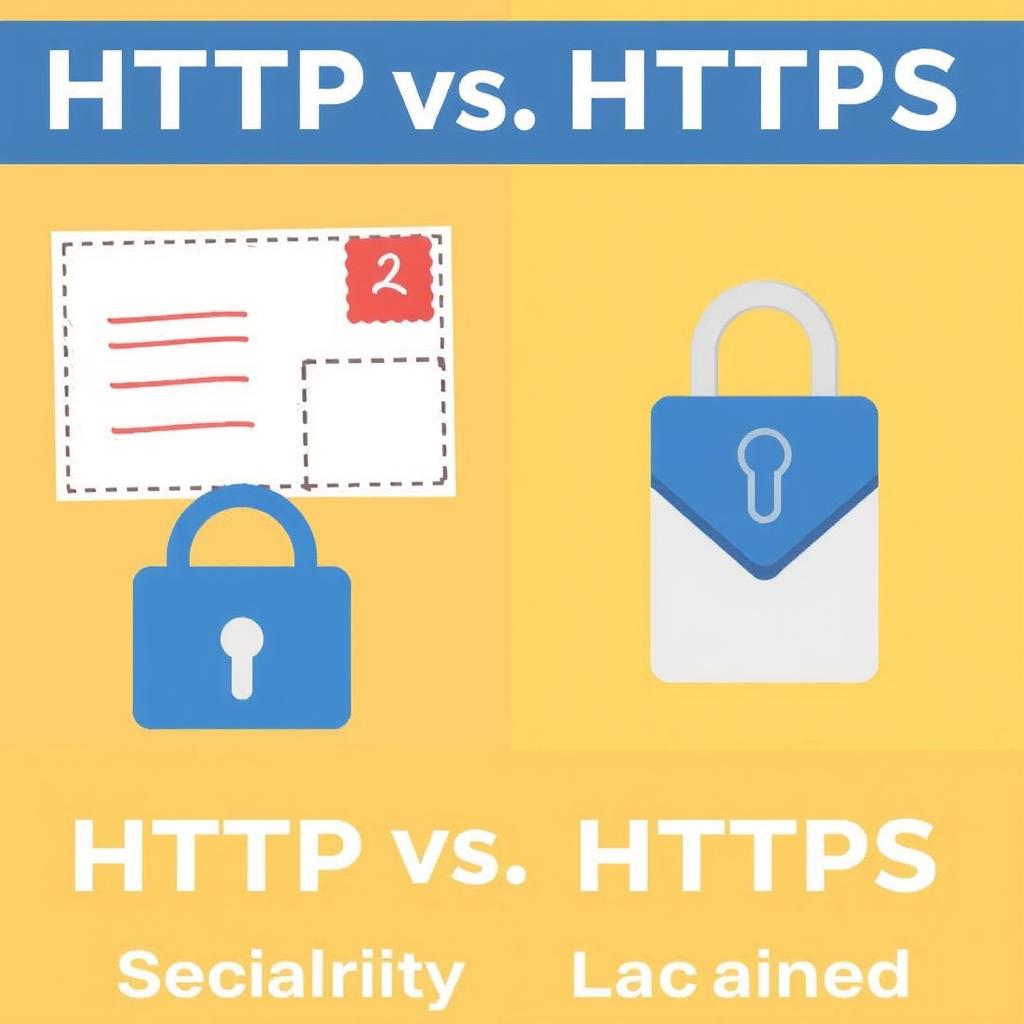Physical Address
304 North Cardinal St.
Dorchester Center, MA 02124
Physical Address
304 North Cardinal St.
Dorchester Center, MA 02124
Learning Tech with Potato
Learning Tech with Potato

HTTP vs. HTTPS: The Difference Between a Postcard and a Sealed Letter
Imagine sending a postcard through the mail. Anyone who handles it can read your message. Now picture sealing that message in an envelope—it becomes private, secure, and tamper-proof. This analogy perfectly illustrates the difference between HTTP (Hypertext Transfer Protocol) and HTTPS (HTTP Secure), the two foundational protocols for transmitting data online. While HTTP sends information in plain text, HTTPS encrypts it, ensuring privacy and security. As cyber threats grow, understanding this distinction becomes critical for businesses and users alike. In this article, we’ll explore how HTTPS acts as the “sealed letter” of the internet, why it’s essential for modern web security, and what it means for SEO, trust, and compliance.
HTTP, the original protocol for web communication, transmits data between browsers and servers in plain text. This means every piece of information—passwords, credit card numbers, or personal messages—is visible to anyone intercepting the connection. Hackers on public Wi-Fi, internet service providers, or malicious actors can easily capture unencrypted data, leading to breaches and identity theft. Although HTTP is lightweight and fast, its lack of security makes it unsuitable for sensitive transactions. Think of it as writing confidential details on a postcard: convenient, but inherently risky in a world where cyberattacks are commonplace.
HTTPS addresses HTTP’s vulnerabilities by adding encryption through SSL/TLS protocols. When you visit an HTTPS website, your browser and the server perform a “handshake” to establish an encrypted connection. Data is scrambled into unreadable ciphertext during transit, deciphered only by the intended recipient. This encryption ensures:
HTTPS acts like a sealed, tamper-evident envelope, safeguarding sensitive interactions such as logins, payments, and data submissions.
Beyond security, HTTPS offers tangible benefits for search engine optimization and user trust. In 2014, Google confirmed HTTPS as a ranking signal, prioritizing encrypted sites in search results. Modern browsers like Chrome also label HTTP sites as “Not Secure,” driving users toward HTTPS-enabled platforms. Additionally:
Adopting HTTPS isn’t just a technical upgrade—it’s a trust-building measure that aligns with user expectations and regulatory demands.
Transitioning from HTTP to HTTPS involves:
Tools like Let’s Encrypt offer free certificates, lowering the barrier to entry. However, proper implementation is key to avoiding pitfalls like broken links or incomplete encryption, which can undermine security and SEO gains.
Conclusion: Security as a Non-Negotiable Standard
The shift from HTTP to HTTPS mirrors society’s broader move toward prioritizing privacy and security online. While HTTP’s simplicity once sufficed, cyber threats and user demands now require the robust protection HTTPS provides. Beyond encrypting data, HTTPS enhances SEO performance, compliance, and user confidence—factors that directly impact a website’s success. As browsers and regulations tighten security standards, adopting HTTPS has transitioned from a recommendation to a necessity. Whether you’re running an e-commerce site or a personal blog, switching to HTTPS is no longer optional; it’s the digital equivalent of choosing a sealed letter over a postcard. The question isn’t “Why switch?” but “How soon can you make it happen?”